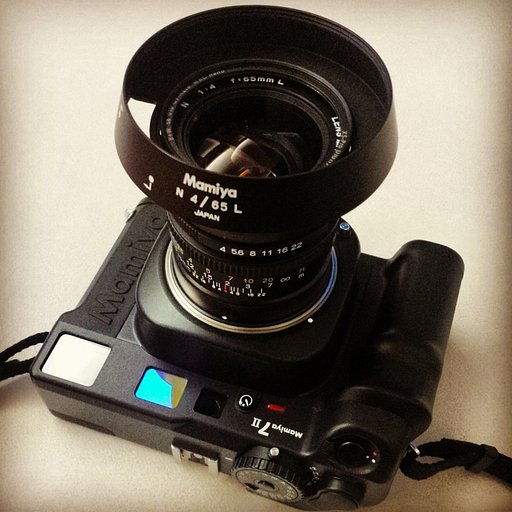Lomopedia: Graflex Norita
10 Share TweetSome good camera stories can start with something that’s as uninteresting as a rebranding. It was commonplace in the camera manufacturing world that it was not a surprise back then to see different brands offer iterations of the same camera. Such is the case with the Graflex Norita — a medium-format single-lens reflex camera that started out as the Rittreck 6×6.

Rebranding, renaming, repackaging — all of these things are not unheard of when it comes to the camera manufacturing business. As a matter of fact, a lot of industries adopt these processes in order to sell ‘new’ products on the market all the time. The Graflex Norita was a camera that has benefitted well from this practice — gaining quite the following due to its rarity and background story.
The Graflex Norita was a medium format single-lens reflex camera that was fashioned after Japanese 35 mm SLR cameras. It had a different shooting orientation compared to the usual style of twin-lens reflex cameras of the time. The original camera that the Norita was based upon was the Rittreck 6×6 (it was also sold as the Warner 66 in export markets). The Rittreck was later modified (mostly cosmetic like badges, trim, and finish) and rebranded as the Norita 66 that was available in the local Japanese market in 1972. It was also released for export a year earlier and was known as the Graflex Norita when it was distributed and sold in the United States.
There was nothing subtle about the Norita. It was big and bulky and had a commanding presence. It was a camera that demanded attention, both from the photographer and subject. Its all-black paint and sharp body angles made it look tough, and it was. However, the black paint coating was said to be thin that’s why some used Noritas have visible brassing (an indication of frequent use). This was a camera that you didn’t mind banging up a little on tabletops and other hard surfaces. The Norita was solid and robust — a camera that was built to last.
Being a medium format camera, the Norita enjoyed a couple of good features like a large waist-level viewing glass and a number of good quality lenses. It didn’t have quite the number of great optics that the Pentasix or Praktisix had but then again, Carl Zeiss lenses were hard to beat. Some notable lenses made for the Norita were aftermarket designs made by Zoomar (formerly known as Kilfitt) and Novoflex.
The Norita didn’t get to have its day in the sun because of poor sales and an underwhelming response from the market. Few photographers took to the idea of owning a medium format SLR that looked and weighed like a tank. That is one of the reasons why Noritas are not that easy to come across within the current used camera market. This scarcity, however, proved to be beneficial to the Norita since people are starting to discover its long-forgotten charm. They want to know what this less-known all-black hulk of a camera can do. Out of the darkness and into the light, the Norita may now be on its way to enjoying the attention it deserved.
Photos Taken by Our Community with the Graflex Norita
Graflex Norita Technical Specifications:
Type: 2 ¼” × 2 ¼” (6 cm × 6 cm) single-lens reflex
Lens: NORITAR 80 mm f/2 (normal/standard lens)
Mount: Breech-lock
Shutter: Focal plane type with silk cloth double blinds, B, 1 second to 1/500 second
Viewfinder: Interchangeable eye-level prism with center cross-wedged and microprism collar, Waist-level viewfinder and Eye-level prism with TTL CdS exposure meter are available
Flash Sync: M, X (electronic flash) and FP; also “X” sync on leaf shutter of 70 mm NORITAR lens
Film Loading: By matching “start” marks on film leader and film guide rails
Film Transport: Multiple stroke advance lever
Exposure Counter: Self-resetting counter registers 12 exposures for 120 and 24 exposure for 220 film
Other Features: Intentional double or multiple exposures, 120-220 control ring for film type reminding, Depth-of-field preview ring, instant return mirror
All information used in this article was sourced from Pentacon Six, Butkus Camera Manuals and Camera Wiki.
written by cheeo on 2018-10-21 #gear #lomopedia #medium-format #120 #camera #gear #220 #graflex #lomopedia #norita #norita-66 #rittreck




















No Comments